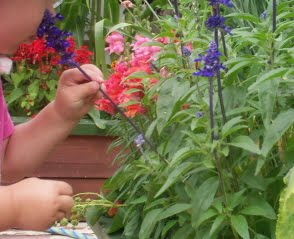Autumn/Fall tends to make me a little anxious. I love taking long hikes and marveling at the colours and watching busy squirrels but fall is a transition season. After all our long summer days outside the children are starting to complain that it is getting far too cold to enjoy their favourite activities. Many fall days have frigid winter temperatures but there is little or no snow to make the cold exciting. I start to dread the thought of spending more time indoors – confined – bored – bickering – whining. *sigh*
So I start to plan for some additional activities that we can do indoors when it gets too cold to play outdoors for long periods. This year I had some activities that I was quite eager to try. There were even a few fall days when I considered trying them but I didn’t – because it wasn’t yet too cold to go outside to play – except it is never actually too cold to play outside. In fact, so far this winter there has only been one day that we didn’t go outside at all – and then the children were upset when it was lunch time and they realized they missed our outdoor time.
Most days this winter we have been outside for 1-2 hours and once you add the time for everyone to get dressed and undressed that is the entire time between morning snack and lunch. We haven’t needed additional indoor activities to keep us busy. On the contrary, all that ‘bored, bickering, whining’ stuff I was stressing about is because indoors we have too many transitions and not enough uninterrupted time.
We actually have too much to do inside – too many things, too many choices, too many distractions, too many disruptions and not enough space and time. In the confined indoor space every time someone picks up a toy, or moves to a different spot, or the phone rings, or someone comes to the door it changes the focus of all the other children in the room. The last thing I want to do is initiate yet another activity and create another transition.
Transitions – arrivals, departures, meal prep/cleanup, diaper changes/bathroom breaks, etc – even if they don’t involve the busy children, they are distractions that interrupt their play. They notice when I walk toward the kitchen and one of them will announce that it is time to clean up for lunch – it is not but someone will assume it is and an argument will ensue. The children have difficulty engaging in any activity because they are anticipating what is ‘next’ – no one is actually playing. They are in limbo, watching and waiting.
I can relate. I often put off doing paperwork, writing blog posts, working on my website etc – not because I don’t want to do it but because I know I won’t have enough time to fully engage in the activity and be able to finish what needs to be done. So instead of getting a little bit of work done I get none done because I didn’t even attempt to start.
Planned group activities don’t help the children. Certainly they can briefly create an artificial period of engagement and can effectively redirect when the children are in battle mode. However, they also create more transitions and ultimately they just make it more difficult for the children to make their own independent activity choices – the way they do when we are outside.

When we are outside, even though my yard is not huge, there is still more separation between the various play areas than there is indoors making it easier for the children to sustain their focus on one activity without being distracted by others playing elsewhere in the yard. My activities are also not a distraction when we are outdoors. I have several benches around the periphery of the yard that make it easy to blend in to the environment and observe the children without disturbing their play. I am present but not involved, not directing.
Indoors we have many of the same activity choice as we do outdoors – even many gross motor opportunities (that will be another post) but indoors there is less space and I am closer which makes the children less likely to engage in self-directed activities. When I am close their questions are endless; “What are you doing? Where are you going? Can I see in that box? Are we going to do a craft? What was that noise? Who is at the door/upstairs/in the kitchen?” They are not engaged in play because I am a distraction.
When I am too close there is an expectation that I will assist them, I will solve their problems, I will entertain them and they don’t need to do anything. In a small confined space it is more difficult for me to allow them more time to solve problems and I am more likely to redirect their activities. My involvement often increases the likelihood that they will do it again – there is a lot more testing of limits as I become a prop in their cause and effect experiments.
So, I don’t want to plan more activities – we don’t need more activities. I need to tweak our schedule and indoor environment to give us more space and uninterrupted time – or we could just go outside.
